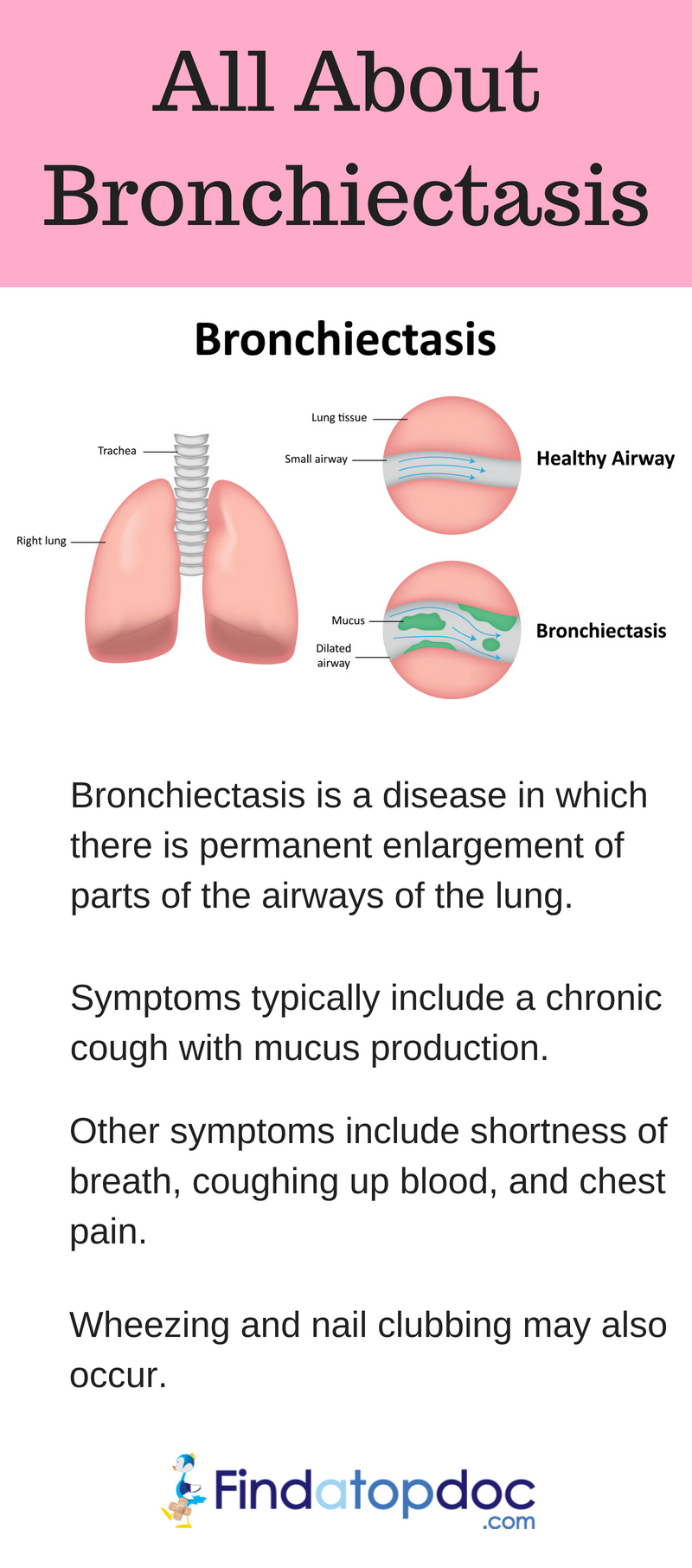
Bronchiectasis is a condition where the bronchial tubes of your lungs are permanently damaged and thickened. These damaged air passages allow bacteria to build up and pool in your lungs. This often results in frequent infections and blockages of the airways. There is no cure for bronchiectasis, but it is rather manageable. With treatment, you can live a normal life. However, flare-ups must be treated quickly to maintain oxygen flow to the rest of your body and prevent further damage.
What Are the Symptoms of Bronchiectasis?
The most common symptoms of bronchiectasis are:
- Coughing up yellow or green mucus every day
- Shortness of breath that gets worse during exacerbations
- Feeling run-down or tired
- Fevers and/or chills, usually developing during exacerbations
- Coughing up blood or mucus mixed with blood
What are the causes of bronchiectasis?
Any lung injury can cause bronchiectasis. There are two main categories of this condition. One is related to having cystic fibrosis (CF), and is known as CF bronchiectasis. It is a genetic condition that causes an abnormal production of mucus.
The other category is non-CF bronchiectasis, which isn’t related to CF. The most common known conditions that can lead to non-CF bronchiectasis include:
- an abnormally functioning immune system
- inflammatory bowel disease
- autoimmune diseases
- alpha 1-antitrypsin deficiency
- HIV
- lung infections such as whooping cough and tuberculosis
How Serious Is Bronchiectasis?
In bronchiectasis, lung function gradually declines over years. Patients with frequent exacerbations whose bronchi are infected by certain bacteria may lose lung function at a faster rate and have more bothersome respiratory symptoms. If you have a serious bronchiectasis exacerbation, you may need to be admitted to the hospital for antibiotic treatment through medications or physical therapy.
Risk Factors
People who have conditions that damage the lungs or increase the risk of lung infections are at risk for bronchiectasis. Such conditions include:
- Cystic fibrosis. This disease leads to almost half of the cases of bronchiectasis in the United States.
- Immunodeficiency disorders, such as common variable immunodeficiency and, less often, HIV and AIDS.
- Allergic bronchopulmonary aspergillosis. This is an allergic reaction to a fungus called aspergillus.
- Disorders that affect cilia function, such as primary ciliary dyskinesia. Cilia are small, hair-like structures that line your airways.
Treatment for Bronchiectasis
There’s no cure for bronchiectasis. However, treatment is important to help you manage the condition. The main goal of treatment is to keep infections and bronchial secretions under control. It’s also critical to prevent further obstructions of the airways and minimize lung damage. Common methods of treating bronchiectasis include:
- methods for clearing the airways (like breathing exercises or chest physiotherapy)
- pulmonary rehabilitation
- antibiotics to prevent and treat infection
- medications to thin mucus
- expectorants to aid in coughing up mucus
- vaccinations to prevent respiratory infections
You may need the help of chest physiotherapy. For example, one form is a high-frequency chest wall oscillation vest to help clear your lungs of mucus. The vest gently compresses and releases your chest, creating the same effect as a cough. This dislodges mucus from the walls of the bronchial tubes.
Following a healthy lifestyle is crucial for overall health and well-being. For instance, if you smoke, try to quit. Smoking harms nearly every organ in your body, especially your lungs. Make sure to talk with your doctor about programs and products that can help you quit smoking. Also, try to avoid secondhand smoke. If you have trouble quitting smoking on your own, consider joining a support group. Many hospitals, workplaces, and community groups offer programs to help people quit smoking.


